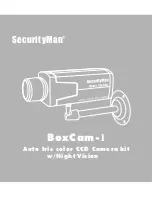
- 28 -
17.
Scanning the data matrix code in envelope windows
The envelope window consists of a foil which would produce reflections in case of direct
internal lighting. Therefore an external lighting is used for the output scanning. It consists of 2
lighting units. Each unit disposes of 32 light-emitting diodes (LEDs). As the conveyor-belt
runs at a speed of up to 2.5m/s, no permanent lighting is applied, but the modules flash up
before each image taking.
Flash duration for this application is approx. 40- 60 μs.
The lighting modules are
fitted to the holder, as
illustrated in the figure. By
swivelling the lighting
modules correspondingly,
these can be adjusted in a way
that they are as close as
possible to the envelope, so
that the lighting is largely
homogenous.
In the letter shop the small
codes are printed at a module
size of 17 mm. In order to be
able to scan the data matrix
code in a process-secure way,
the modules should have a
minimum resolution of at least
6- 7 pixels/module. Therefore
the code scanner has been
adjusted in a way that it has
approx. 6 pixels at a module
thickness of 17 mm, thus
setting the scanning area of the code scanner to 39 mm x 30 mm. The distance between the
code scanner and the data matrix code will then be approx. 610 cm.
Adjusting the distance:
When topControl is running, the live image can activated. It is then displayed on the
connected VGA monitor. Now a distance is selected ensuring a clear image. It may be useful
to implement the adjustment by using both a thin and a thick letter and to adjust the optimum
distance in the middle.







































